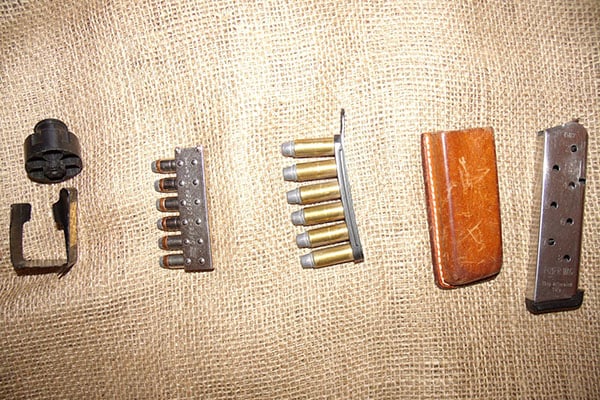
Last Updated on
Over the past 50 years, I have carried every type of handgun in almost every type of holster, all over my body. Along the way, I learned some good ideas while making lots (and lots) of mistakes. Why should you endure the embarrassment I have already suffered? No reason, so let’s look at the long path of concealed carry tips I have beaten for you.
1. Holsters
Save your money by buying quality from the get-go. Cheap holsters are cheap for a reason – and not a good one. Yes, if you just want a way to carry exposed walking from your car to the range, a shapeless no-name nylon one size fits all may work. Or, it may drop your brand new shooting iron on the pavement, adding some “personalized engraving” (by that famous engraver, GRAVEL), and detracting quite a bit of value.
A quality holster will be made of leather, Kydex (hard polymer), and in some limited number by brand name makers, nylon. But if you compare a “big box” holster to a brand name holster, both made of nylon, you will see a huge qualitative difference. Ultimately, your life, and the lives of your loved ones, may depend on your ability to draw your defensive handgun.
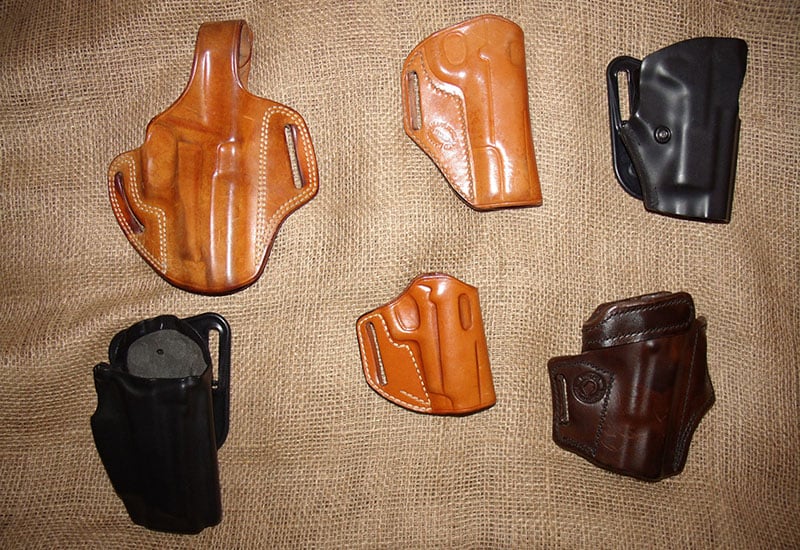
Cheap holsters fail by:
- Not fitting your belt – Even a quality belt – so the holster slides around while you wear it, and is never there when you need it NOW!
- Not fitting your gun – The gun slops around, wearing the finish and evading you grip when lives are on the line.
- Not retaining your gun when you walk, trot, run, bend over, or sit down – Yes, I have had the sickening feeling of my handgun working it’s way out of my holster, requiring me to grab it through my cover garment and quickly find a concealed place to reholster it.
- Not letting you draw when you really, really need to – A cheap inside the waistband holster came out still on my gun one time, fortunately only in a match. I swiped it off, and then gave it away (to someone I did not like). More recently, a female student had her new, expensive gun purse with a satin lining in the gun compartment. Seems the satin liked her pistol so much, it would not let go of it.
2. Guns
For some reason, some shooters think: “I saw a champion match shooter the other day, and he had a huge ambidextrous safety on his gun, so I put one on mine!” Too bad he did not notice that that match shooter was carrying openly, without a cover garment to hook on that safety. I have seen folks get their pistols ripped right out of their hands after an oversized hammer spur (for easy cocking) or safety got hung up on the inside of their cover garment. No way to win a match – or survive a deadly encounter on the street.
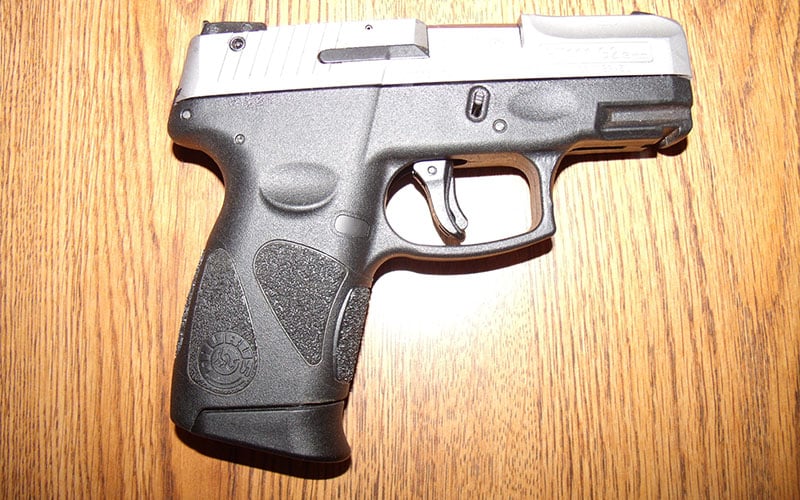
Other gun parts can trap you as well. Tacky rubber grips are great for shooting. But if they “tack on” to the lining of your cover garment, nothing good will happen. It may foul your draw; it may even prevent your draw; it may pull your gun right out of your holster, and they may cause your gun to “print.” Printing is when the handgun shows through your cover garment. I have used rubber grips, but only after they have been used enough to wear off that tacky feel. My personal preference, where possible, is smooth wood grips. I have lightly sanded rubber and plastic grips, to wear down the checkering and remove the tacky feel.
3. Ammo
No one has ever gone into a gunfight with too much ammo! But you can get carried away – I have yet, in 50+ years of watching, ever seen a civilian need to reload in a defensive shooting. I’m sure that someplace there has been a case, but I have never seen one. Some folks have chosen to reload, which is a good idea. On the other hand, that which can go wrong, will! A spare speed loader (or speed strip) or magazine could be a life saver, and the strips and mags are slim and easy to carry. Plus, the vermin are running in packs more often these days, and the newer drugs of choice can make them almost impervious to pain. If I am carrying a reliable handgun with 10+ rounds of ammo, I don’t usually carry a spare magazine. But that is only possible in the winter where I live, so a compact gun requires a spare magazine.
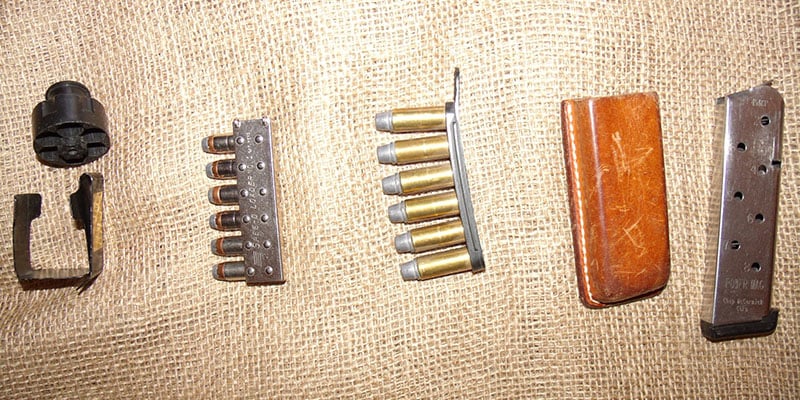
The ammo you choose to carry is perhaps the least critical item – IF you can put your hits in the right spot. Any Jacketed hollow point by a major manufacturer is OK. I am waiting on the new fluted bullet ammo, until they compile a track record of successful stops on the street before I carry them. It’s like never buying a car in the very first year of production. I’ll let others risk their lives as “test mice” first. Just buy enough so you can shoot a magazine or two through your gun, to make sure they are compatible, and you know what the recoil and blast are like.
4. Clothing
Concealed carry implies your gun won’t be visible to an average person. You can conceal a gun so that only a trained, experienced person might detect it, usually known as deep cover. But the deeper it is hidden, the harder it is to access when seconds could be a lifetime – your lifetime. How you dress can make a big difference, so you choice of clothing becomes important for more than just impressing the opposite sex.
A few simple facts first: Patterns conceal better than solid colors; heavier weights of cloth are better, and a size larger can be a big help.
Patterns tend to break up outlines, which is one way we recognize things. The military wear camouflage for just that reason. “Hawaiian Shirts” with their bright patterns are an extreme example, and remain popular in warmer climates for CCW. Since they are worn outside the pants, they can cover even large handguns in outside the pants holsters, if (big IF) you have the body shape. Golf/Polo shirts also fill the need, if they are not too tight, and of a heavy enough material. By the way, resist wearing that shirt you bought with the name of the gun maker/shooting school/ammo company, unless you are only going to the range! Bad guys can look at the pictures in the gun magazines, and figure out that Glock is not a new size coffee at Starbucks!
Heavier weights of cloth are less likely to grab onto your handgun, and let the world see you have something big and hard on your hip. They tend to slide over the bulges, making them look more natural – perhaps not flattering, but natural.
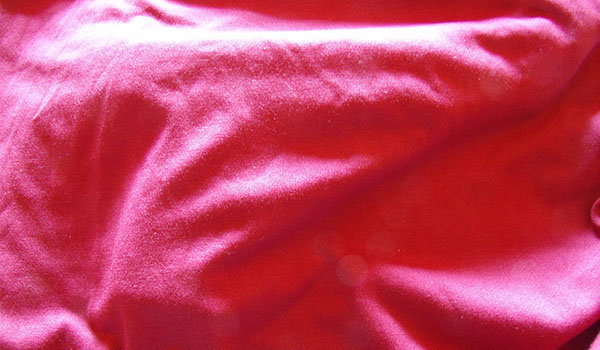
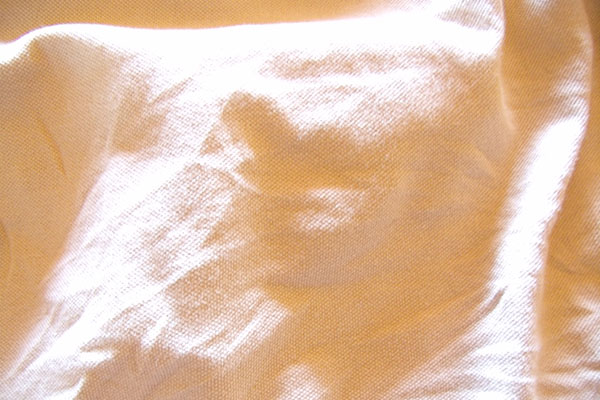
A larger size of pants (if you choose to carry inside the pants) and duty belt will make your pistol more comfortable, and let you avoid those comments from your friends about how you have put on weight! Look around, and you may see someone who got the pants 1” larger but want to wear the same belt. The well worn notch now exposed on the belt says either “HEY, I GAINED WEIGHT” or “Now I’m carrying a gun!” Remember, the person who notices this could be an outlaw, or a local police officer who may stop you in front of your friends to ask you questions.
All in all, you can’t just think about carrying a gun, you have to consider a personal protection system. Keeping the people around you from noticing can keep you from getting involved in something when you would do better as a good witness. My first line of defense remains threat recognition, followed closely by threat avoidance. In the end, the best shots are the ones you never fire, and concealed carry goes a long way towards giving you survival choices.




Leave a Reply